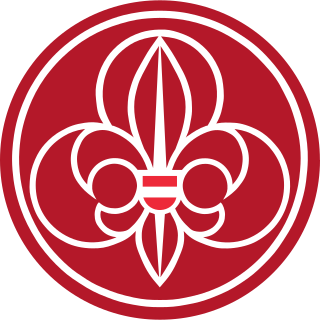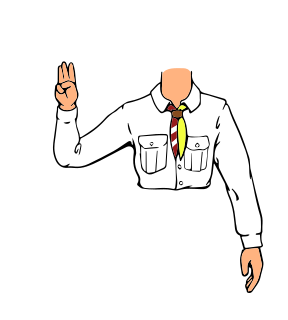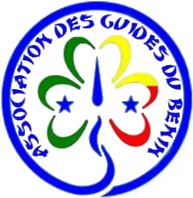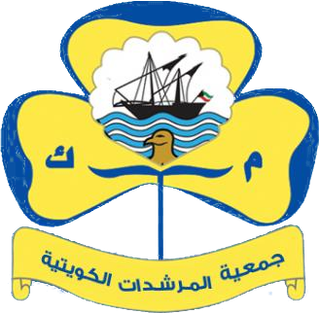
The World Association of Girl Guides and Girl Scouts is a global association supporting the female-oriented and female-only Guiding and Scouting organizations in 150 countries. It was established in 1928 in Parád, Hungary, and has its headquarters in London, England. It is the counterpart of the World Organization of the Scout Movement (WOSM). WAGGGS is organized into five regions and operates five international Guiding centers. It holds full member status in the European Youth Forum (YFJ), which operates within the Council of Europe and European Union areas and works closely with these bodies.

Pfadfinder und Pfadfinderinnen Österreichs is the largest Scouting and Guiding organization in Austria and the only one approved by World Association of Girl Guides and Girl Scouts (WAGGGS) and the World Organization of the Scout Movement (WOSM). The association claims more than 300 troops with more than 85,000 Scouts nationwide. WOSM and WAGGGS give quite smaller membership values for the PPÖ: 9,503 Scouts and 10,508 Guides.

Since the publication of Scouting for Boys in 1908, all Scouts and Girl Guides around the world have taken a Scout promise or oath to live up to ideals of the movement, and subscribed to a Scout Law. The wording of the Scout Promise and Scout Law have varied slightly over time and from country to country. Some national organization promises are given below. Although most Scouting and Guiding organizations use the word "promise", a few such as the Boy Scouts of America tend to use "oath" instead. Typically, Scouts and Guides will make the three-fingered Scout Sign when reciting the promise.

Magyar Cserkészszövetség, the primary national Scouting organization of Hungary, was founded in 1912, and became a member of the World Organization of the Scout Movement in 1922 and again after the rebirth of Scouting in the country in 1990. The coeducational Magyar Cserkészszövetség had 8,145 members in 2011.

Slovenský skauting, is the primary national Scouting and Guiding organization of Slovakia. Currently has around 7000 members. With 3,157 Scouts and about 3,000 Guides. Slovenský Skauting is the largest youth organization in Slovakia and a member of both the World Organization of the Scout Movement and the World Association of Girl Guides and Girl Scouts.

Združenje slovenskih katoliških skavtinj in skavtov is the national Guiding organization of Slovenia. It is an independent, voluntary, youth, educational and open Slovenian Scout and Guide association which was established in 1990 taking into account pre-Second World War Slovenian Scouting and was built up on experience and values from other scout and guide associations especially AGESCI who helped establishing the concept of the organizations activity.

Bandalag íslenskra skáta is the national Scouting and Guiding organization of Iceland. Scouting was founded in Iceland in 1912 and was among the earlier members of the World Organization of the Scout Movement in 1924. Guiding in Iceland was founded in 1922 and among the founding members of the World Association of Girl Guides and Girl Scouts.

Gidsen- en Scoutsbeweging in België (Dutch) or Guidisme et Scoutisme en Belgique (French) (GSB) is the national Guiding and Scouting federation in Belgium. Scouting in Belgium started in 1911, and Guiding followed in 1915. The Belgian Scouts were among the charter members of the World Organization of the Scout Movement (WOSM) in 1922, and the Guides were one of the founding members of the World Association of Girl Guides and Girl Scouts (WAGGGS) in 1928. The federation counts 96,837 Scouts and 59,268 Guides.

The Asociația Ghidelor și Ghizilor din România (AGGR) is the national Guiding organization of Romania. Guiding in Romania began in 1928, was restarted in 1990 and became a member of the World Association of Girl Guides and Girl Scouts (WAGGGS) in 1993. The coeducational organization has 1,000 members.

The Girl Scouts of Japan is the girls-only Scouting organization serving Japan, founded in 1919. It became a member of the World Association of Girl Guides and Girl Scouts in 1952 and had 33,593 members as of 2014.

Russian Association of Girl Scouts is the national Girl Scouting organization of Russia. Guiding in Russia started about 1910 within the Boy Scout groups and was disbanded in the 1920s. It was restarted in 1990 as part of the Federation of Scouts of Russia and formed an independent association in 1994. The organization became an associate member of the World Association of Girl Guides and Girl Scouts (WAGGGS) in 1999 and a full member in 2008. The girls-only association has 1,158 members.

The Guides du Bénin is the national Guiding organization of Benin. Guiding in Benin started in 1954, the association was founded in 1960 and became a member of the World Association of Girl Guides and Girl Scouts (WAGGGS) in 1963. The girls-only association has 1,533 members. It is affiliated to Scoutisme Béninois, the national member of the World Organization of the Scout Movement.

The Fédération Libanaise des Eclaireuses et des Guides is the national Guiding organization of Lebanon. Guiding was introduced to Lebanon in 1937 and became a member of the World Association of Girl Guides and Girl Scouts (WAGGGS) in 1954. The girls-only federation consists of five independent organizations with a total of 6,615 members(as of 2008).

The Kuwait Girl Guides Association (KGGA) is the national Guiding organization of Kuwait. The association has 9,715 members. Founded in 1957, the girls-only organization became a full member of the World Association of Girl Guides and Girl Scouts (WAGGGS) in 1966.

Religion in Scouting and Guiding is an aspect of the Scout method that has been practiced differently and given different interpretations over the years.

The Nigerian Girl Guides Association is the national Guiding organization of Nigeria. It serves 113,726 members. Founded in 1919, the girls-only organization became a full member of the World Association of Girl Guides and Girl Scouts in 1966.
The Scout and Guide movement in Hungary is served by
Scouting and Guiding in Sweden is represented by one organisation Scouterna as a member of the World Organization of the Scout Movement and World Association of Girl Guides and Girl Scouts. It was formed in 2012 as the successor to Svenska Scoutrådet which consisted of five different associations.
The Scout and Guide movement in Jamaica is served by

The Hungarian Scout Association in Romania is the Scouting organization of the Hungarians in Romania. Currently, there are 134 Scout groups, of which 107 are active.























